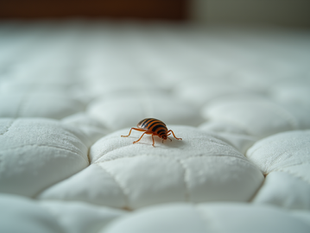
Tips for Preparing Your Home for a Bed Bug Inspection
0
3
0
Preparing your home for a bed bug inspection is essential to ensure the process goes smoothly and effectively. Bed bugs are tiny pests that can be difficult to detect, so a thorough inspection is necessary to identify their presence and prevent infestations. Proper preparation not only helps inspectors do their job efficiently but also increases the chances of successful treatment if bed bugs are found. This guide will walk you through practical steps to get your home ready for a professional bed bug inspection.
Understanding the Importance of a Bed Bug Inspection
A bed bug inspection is a detailed examination of your home to detect signs of bed bugs. These pests hide in small crevices, making them hard to spot without expert help. Inspections are crucial because early detection can prevent a minor problem from becoming a full-blown infestation.
Professional inspectors use various methods, including visual checks and specially trained dogs, to find bed bugs. If you suspect you have bed bugs or want to be proactive, scheduling a bed bug inspection is the first step. Preparing your home properly will help the inspector access all necessary areas and identify any hidden bugs.

How to Prepare Your Home for a Bed Bug Inspection
Preparation is key to a successful bed bug inspection. Here are some practical steps to get your home ready:
1. Declutter Your Space
Bed bugs love to hide in clutter. Remove unnecessary items from bedrooms, living rooms, and other areas where bed bugs might reside. This includes piles of clothes, stacks of books, and boxes. Clearing clutter allows inspectors to access all potential hiding spots.
2. Launder Bedding and Clothing
Wash all bedding, curtains, and clothing in hot water and dry them on the highest heat setting. Heat kills bed bugs and their eggs. Place cleaned items in sealed plastic bags to prevent re-infestation before the inspection.
3. Move Furniture Away from Walls
Bed bugs often hide in cracks along walls and behind furniture. Pull beds, sofas, and other furniture away from walls to give inspectors better access to these areas.
4. Vacuum Thoroughly
Vacuum carpets, rugs, mattresses, and upholstered furniture. Pay special attention to seams, edges, and crevices. Dispose of the vacuum bag or empty the canister into a sealed plastic bag immediately after vacuuming.
5. Avoid Using Pesticides Before Inspection
Do not apply any insecticides or sprays before the inspection. Chemicals can interfere with the inspector’s ability to detect bed bugs and may cause them to hide deeper.

What to Expect During a Bed Bug Inspection
Knowing what happens during an inspection can help you prepare mentally and physically. Inspectors will:
Examine beds, mattresses, box springs, and bed frames.
Check furniture, baseboards, electrical outlets, and cracks in walls.
Use specialized tools like flashlights and magnifying glasses.
Possibly deploy trained dogs to sniff out bed bugs in hard-to-reach places.
The inspection can take anywhere from 30 minutes to a few hours, depending on the size of your home and the extent of the suspected infestation. Being cooperative and providing access to all rooms will help the process go faster.

After the Inspection: Next Steps
Once the inspection is complete, the inspector will provide a report detailing their findings. If bed bugs are detected, they will recommend treatment options. Here’s what you should do next:
Follow the treatment plan carefully, including any preparation steps for pest control.
Continue to keep your home clean and clutter-free.
Monitor for signs of bed bugs regularly.
Consider scheduling follow-up inspections to ensure the problem is resolved.
If no bed bugs are found, maintain good habits to prevent future infestations, such as inspecting secondhand furniture before bringing it home and being cautious when traveling.
Finding Reliable Bedbug Inspection Services
Choosing the right professionals for your bed bug inspection is crucial. Look for companies with experience, positive reviews, and proper certifications. For example, bedbug inspection services that use trained dogs can offer highly accurate detection.
When contacting a service, ask about their inspection methods, pricing, and what you need to do to prepare. A reputable company will guide you through the process and answer all your questions.
Preparing your home for a bed bug inspection can seem overwhelming, but following these tips will make the process easier and more effective. A thorough inspection is the first step toward a bed bug-free home, so take the time to get ready and work with trusted professionals.






